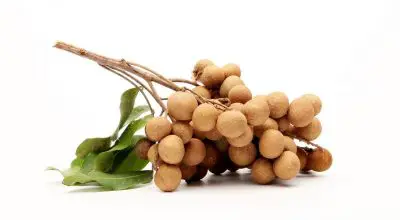Every dog owner probably knows what agility is. Perhaps, they’ve seen some dogs competing agility obstacles on TV. Some might be lucky enough to witness it in person. This may have piqued their interests.
You might be thinking that this could be a great thing for you and your Border Collie or any dog you have. If you’re thinking it that way, because it is! Truth is, dog agility is among the fastest-growing sports in the dog world across the United States.
What is Agility Training for Dogs?
Dog agility involves fast-paced action.
The dog and their owner are given limited time to complete the course. As for the course, it has roughly 15 obstacles some of which are:
- Tunnels
- Ramps
- Weave poles
- Jumps
The dog ought to complete the entire course following the predetermined pattern.
Agility training for dogs teach every canine to complete obstacles presented to them. Here, the owner needs to lead their dog using only hand cues and voice.
As a Training
Agility training taps to the dog’s instincts. Dogs are naturally predatory animals. Back in the days, they hunt for their food to survive. They were chasing small animals over fallen logs, steep terrains, around rocks, through the woods and even narrow passages. These dogs ought to be quick. Otherwise, it would have lost its meal.
With agility courses, it is mimicking this instinct using the obstacles laid out across the course.
As a Sport
Agility is also known as a popular sport among dog owners and their canines. This is dominated by breeds that possess high energy. It’s a perfect platform for such dogs in challenging their mind and body simultaneously.
On the other hand, handlers need to exert the same energy as their dogs. They must run along with their dogs to guide them to complete the obstacles. During trials, each participating team competes against each other. The goal is, complete the course with little-to-no errors at the fastest possible time.
Is Agility Training Good for Dogs?
Agility training is indeed a great training for dogs. Whenever agility is brought into topics, the first thing that dog owners and enthusiasts think are Shelties, Aussie Shepherds and of course, Border Collies. This didn’t come as a surprise. These breeds are known for their lively attitude and athleticism.

While these breeds dominate agility courses, other dogs are also welcome. In fact, even just typical agility training for dogs would be enough. There are many good benefits to having your dogs engaged in such activities. Some reasons that would convince you are the following:
A way to release mental and physical energy – agility is a physical activity. It uses your dog’s energy but in a fun and safe way. Often, for dogs that have a buck load of energy, this serves as the perfect ground for them to focus on a given task and run at lightning speed.
In the process, it strengthens the joints, builds lean muscles and improves coordination.
Developing confidence – through agility training, it can help your dog improve its confidence. Any experienced dog owners know that a confident dog is one that can:
- Overcome small spaces
- Go through unusual surfaces
- Finish tasks on its own
This developed confidence acquired through agility training will reflect in your dog’s life as well. When meeting new people, animals or being introduced in a new place, they can maintain composure.
Perfect for building self-control – the majority of untrained canines will ignore or run over tasks or obstacles in front of them. Some may only do what attracts them the most. When engaged in agility training for dogs whether or not equipment is involved, it’ll teach your dog to have self-control. They’d commit themselves in completing the tasks you asked them to.
At What Age Should Your Dog Start Agility Training?
Puppies can be trained for agility at a tender age of 8 weeks. Though, you have to wait for 12 to 18 months before they can fully complete a course. After all, agility is an intense activity/sport.
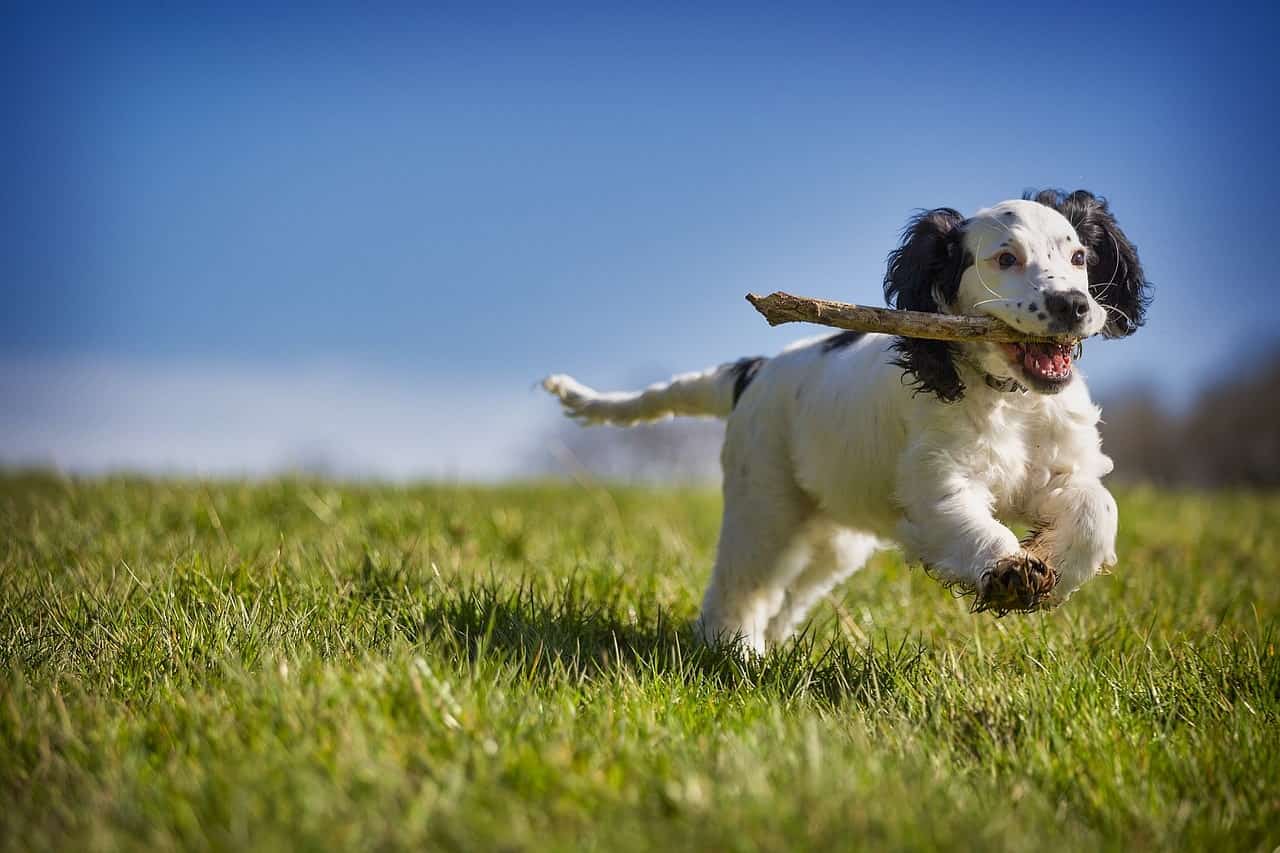
While dogs that are under a year old could compete on courses that consist of tunnels and low jumps, it’s not recommended to introduce contact equipment with them. It is also not a wise idea to train them on weave poles.
If you happen to have a large dog, it is best to wait until 18 months if you want them to complete the entirety of the agility course. Following are obstacles for dog agility training based on age:
- 12 to 18 months – full sized jumps, A-frame and weave poles
- 10 to 16 months – teeter totter and dog walk
- 4 to 6 months – pause table
- 8 weeks – tunnels
It would never hurt to seek your vet’s professional opinion as well. They can help you know whether your dog is prepared to take on new challenges or you should wait.
How to Introduce Puppies in Agility Training?
Before introducing agility training for dogs, you must have established the foundational skills first. You can introduce homemade obstacles. This imitates the obstacles on a real course. For example, you can use a big box for tunnel courses, hula-hoop for the tire jump and so forth.
Of course, take it easy on their training, especially if it’s just a pup. Their body is still developing and growing and adjusting to the obstacles.
If you have no idea how to do any of it, you can search for clubs near you. These clubs will help you train your dog for agility such as:
- Passing through agility tunnel
- Walking next to handler at variable speed
- Take turns when cued
- Come command
- Stay command
- Balancing
Of course, check if they have instructors that suit your style and your dog’s personality. As much as possible, enroll in classes or clubs that reinforce positive training.
What Age is Puppy Ready for Agility Obstacles?
Before you kick with a new activity or sport for your dog, you should talk to your vet first. Breeds have unique conditioning requirements, so as their needs. There are dogs that take longer to develop and mature. The exact reason why you must get professional opinion before starting agility training.
We mentioned that puppies can start with agility training in as early as 8 weeks. But the average though is at 12 to 24 months. This is when a dog can complete an entire agility course with less risk of injury.
Basic Commands in Dog’s Agility Training
While it is a rare occasion among dog owners, there are some who don’t have any idea what agility training for dogs is. Yet, they’re eager to start one with their dogs. In such a case, you are probably wondering when is the best time to train.
Puppies aged less than 90 days are the perfect time to get started with training. This enables you to lay down the foundation for a trained and well-behaved dog. Training can begin with household ground rules and potty training. You can train your pups the following:
- Where to sleep?
- Where to stay during mealtimes?
- Rooms they are permitted
If done right, this prepares your dog for challenging commands in the future. Make sure to apply positive reinforcement. Your dog can remember fast when they are being rewarded for good behavior.
Sit
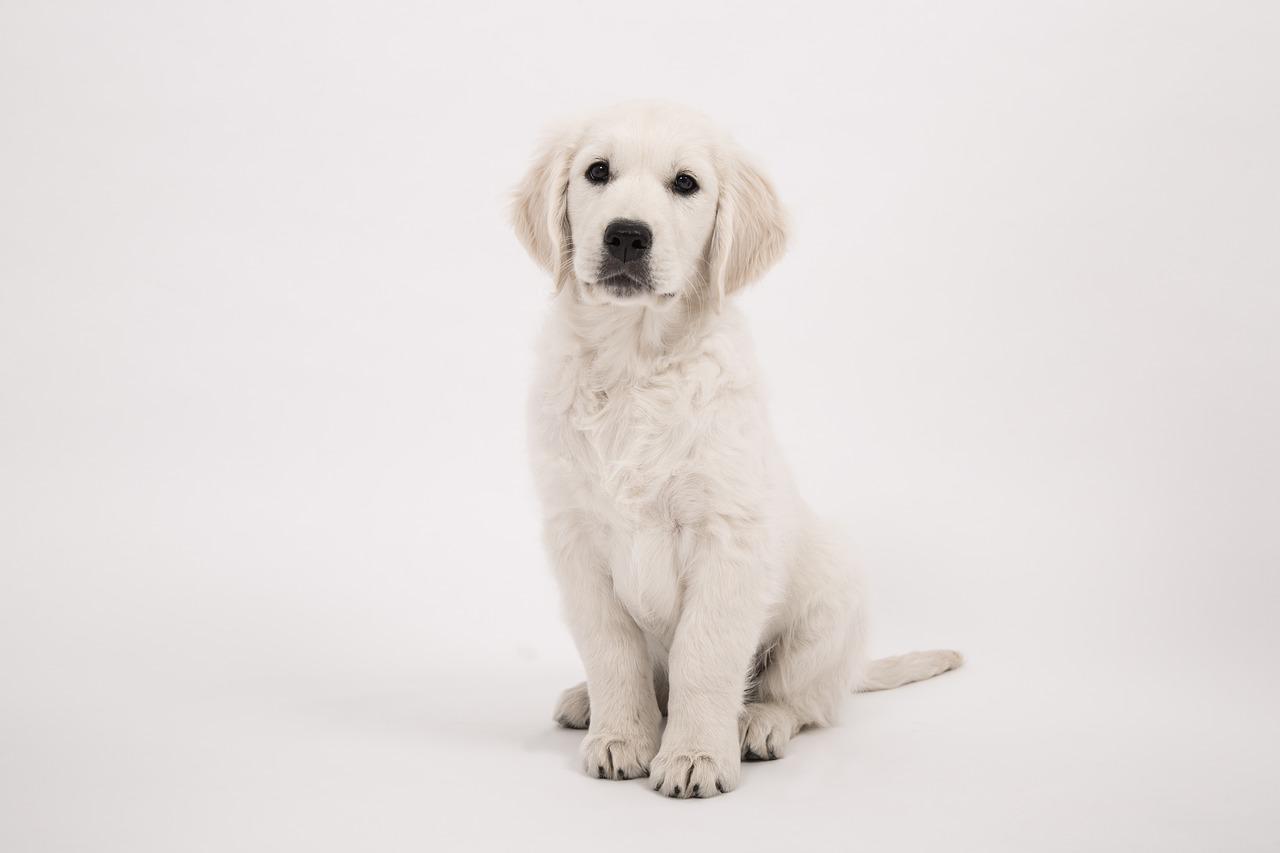
Sit is among the basic commands your dog can learn. Canines that know this command are easier to control. They’re calmer than most dogs too. Furthermore, this command prepares your dog for complicated commands like come and stay.
Follow these steps to simplify the training for “sit”.
- Grab your dog’s favorite treat.
- Put it close to their nose.
- Hover the treat above your dog’s head.
- Wait until they start following the treat, causing them to lower their bottom.
- When they’re in a sitting position, say the “sit” command.
- Reward them with the treat.
Redo these steps in short training sessions until they master it. When they do, command your dog to sit prior to mealtime or before walking them out. Basically, do this whenever you want to calm your dog.
Lay Down

Sooner or later, your dog will master “sit”. When they do, you can proceed to “lie down”. To train for this trick, follow the steps below:
- Command your dog to sit.
- Pull out a treat and move it towards their chest.
- As they follow the scent, slide it down the surface.
- When your dog follows it, they’ll eventually be in a “lying down” position.
- Give them the reward for positive behavior.
Quick Tip
You can begin to cue the “down” command as your dog is used to following its treat in such a position. Practice this several times. However, keep it in short sessions.
Stay
You need to establish clearly when to “stay and go” on this command. In essence, you need a “release” word paired with your “stay” command. This signals your dog that the command has been completed.
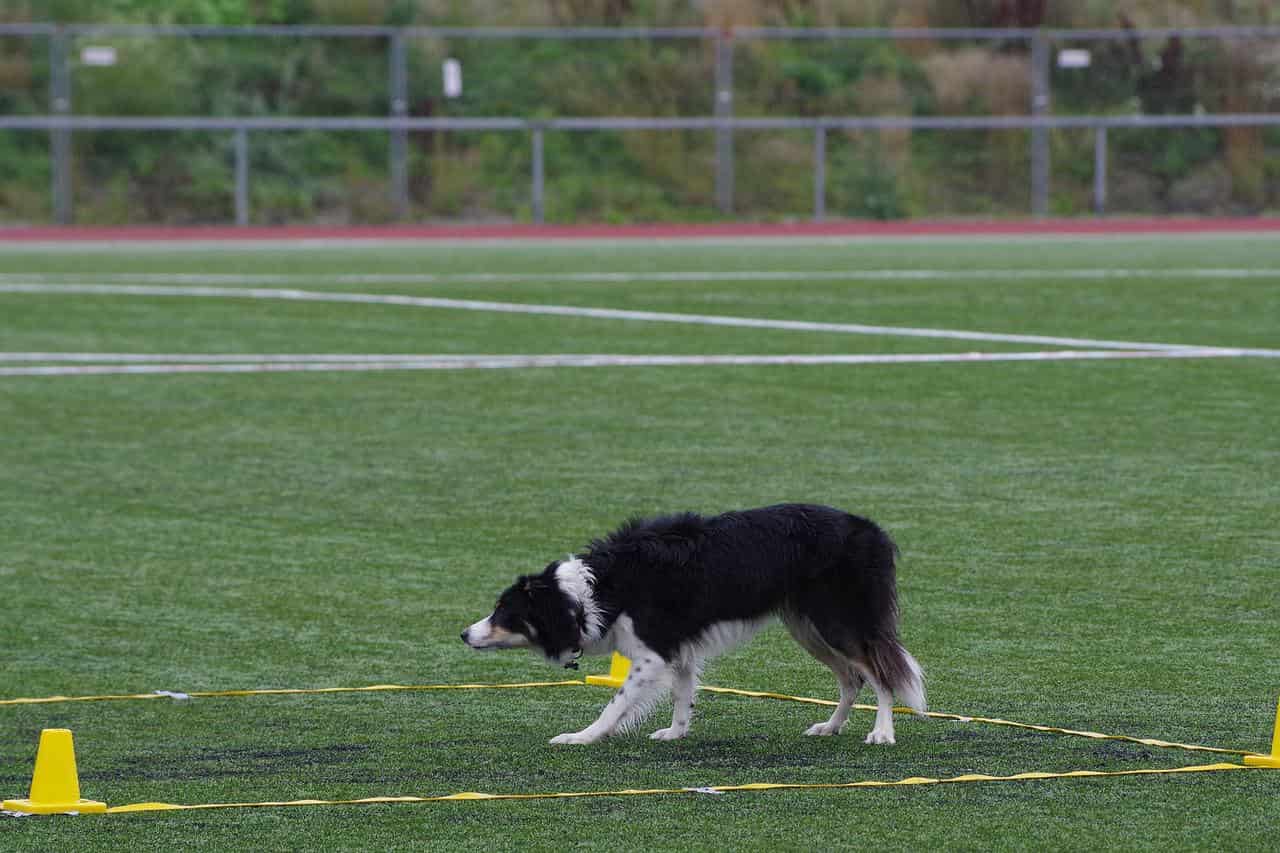
A few of the words used are “free”, “all done” and “release”. Pick your release word. Use it consistently when the command is completed. It may seem not much, but it delivers the most impact on this training.
Friendly Reminder:
When training for “stay”, there are a couple of things you must watch out:
- No Treats – put foods or treats away. This is a bad practice. It lures your dog to keep following you.
- Recall – instead of learning “stay”, dogs may anticipate recall. It’s because you keep calling them to come to you. What must be done is to leave your dog and return to them before saying the “release” word.
Come
To start training for “come”, you can hook up a non-retractable leash. Set a distance of at least 6ft from your dog that’s in a sitting position. Gently pull the leash towards you. Do this while saying your dog’s name with the command “come”. When they reach you, give them a treat and affection.
Heel
Among the tricks you can train your dog for agility, heels are the easiest and most fun. Heel is deemed as a shaping technique. Owners can take advantage of this to teach their dog to walk beside them.
Bring lots of your dog’s favorite treat when training for heels. Cut it in small pieces. It serves as a reward when they walk beside you.
Off
Off can be used when you want to take your dog’s spot or you simply want them to move, in a nicer way. Further, you can benefit from teaching this command. It gives you a work around on dogs that are protective of their spot or territory.
There are two simple ways to teach “off”, and these are:
- Watch out for your dog’s paws or body. If it’s up onto something, say “off” immediately. Grab a treat and hover it in front of their noise. This should divert your dog’s attention. When their body or paws are back in a normal position or on the ground, reward them with the treat.
- Redo the process. As soon as your dog understands “off” when cueing it, gradually remove the treats. Instead, you can praise them or randomly give treats.
No / Leave it
The goal of this training is to develop an automatic behavior.
Instead of taking something from the ground, they should wait for your permission before picking it up or eating it.
How Can I Start Agility Training At Home?

Enrolling in an agility training for dogs’ class might be a little expensive for some. Before doing so, you would benefit by doing DIY agility obstacles right in your house. This gives you an idea whether your dog likes it or not. Dogwalk, standard jumps and teeter board are a few of the obstacle courses you can put up in your home.
- Dogwalk – you can either use picnic benches for the dog walk or perhaps, build on your own. If you chose the latter, you can put 12ft plywood across a couple of cinderblocks.
- Standard Jumps – stacking one cinder block on top of the other with plywood strips on top can replicate official standard jump obstacles used. Simply adjust the jump height based on your dog’s size and height.
- Teeter Board – this is among the challenging obstacles for various dog breeds. Dogs should be confident and comfortable in passing through moving objects.
Is Dog Agility Training Expensive?
In most cases, a one-on-one lesson takes half an hour. Inexperienced trainers could be charging clients as little as $20 per hour. Experienced dog instructors can charge for as much as $70.
If you prefer to attend group lessons, you can pay for 10 to 50 dollars per hour. Once again, multiple factors will affect the pricing such as:
- Instructor experience
- Group size
- Facility
It doesn’t matter which group class you plan to pick. Just make sure that the instructor has good experience, appropriate trainer to dog ratio and complete amenities in the facility.
Dog Agility Training: Sport
Before doing agility training for dogs, it is imperative to have them assessed first. Through the assessment, you’d know if:
- They’re energetic
- Enjoy running
- Responds to instructions
- Get along with other dogs
If your dog passes the assessment, then they should be good to train and run the course.
Believe it or not, agility is one of the top dog sports in the US. In fact, per annum, it attracts over a million participants in the country alone. It is like the American Ninja Warrior but instead of real humans, it’s the dogs that complete the obstacles.
What Is Dog Agility As a Sport?
Agility is a sport not just for dogs. It involves their handler as well. Just as with other sports, participants can train and compete at varying levels.
This sport has a long history dating back to 1970 in England. Initially, it was intended as a demonstration sport. The first recorded organized agility course was introduced in 1978 for audiences at the Crufts Dog Show.
For agility competition, there are at least 20 unique obstacles the dog must complete. As the dog begins its run, the handler or trainer can’t touch neither the dog nor the obstacles. The objective of the competition is to finish the course at the fastest time possible without mistakes.
Competition Levels
Not all are familiar with agility competitions. Among those who’ve heard the sport, it can cause intimidation even as a spectator. Pressure is sometimes multiplied for those who want to participate in the event.
But participation should be the least of your worries. Agility competitions are available at three levels: Beginner, Intermediate and Advanced. To know and prepare which level you and your dog should compete in, keep reading.
Beginner
Beginner class is perfect for dogs that are at least 4 months old. Dogs that have been trained for basic obedience are also suited for this class.
If you are from a different class, have your dog evaluated by the new club or trainer before transferring. Reputable clubs and classes will not allow dogs under 2 years to be trained for any high-impact hurdles. Though, they will be taught foundation skills required. In majority of the classes, beginner lessons are broken into two levels which are:
- Beginner Introduction Class
- Beginner Continuous Class
This creates a smooth transition for first-timers to adapt to the challenges.
Intermediate
Intermediate classes are for dogs that are groomed to compete in tournaments. These dogs are also the ones with experience in agility. In such a class, the handlers and their dogs are taught how to finish the obstacles, as if they’re in an actual tournament. To succeed in intermediate class, the dog and handler must meet the following:
- Has completed and passed the Beginner class
- Strong off-lead control
- Preparedness of hurdles at lowest heights
- Understanding of weave pole entry and the ability to complete six weave poles
Advanced
Advanced agility classes are designed for dogs that could complete 12 weave poles without using training gates or aids. The course is a lot more complicated. For owners who are dedicated to competing for agility tournaments, this is the best class to take on.
In this class, standards are followed by everyone and this includes:
- No aggressive dogs
- No pinch, choke or shock collars
- No flipflops or sandals for the handler/owner
Agility Course Obstacles
The length of the obstacle course is measured by a judge. A commercial measuring wheel is used. The course is measured via the straight-line distance method. After making the measurements, the official time is given by the judge.
As mentioned, agility tournaments consist of multiple obstacles in the entirety of the course. Some of the most common hurdles are the following:
Jumps
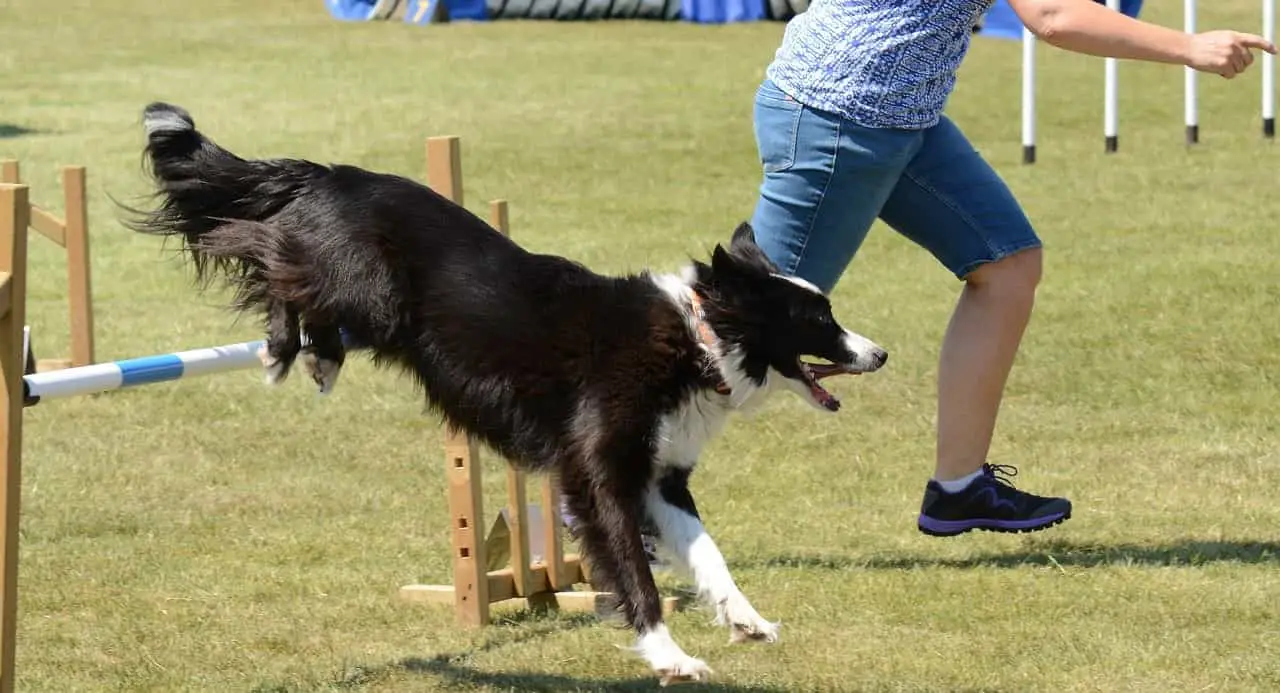
A correct agility jump needs the dog to wait for the handler’s command before jumping onto the obstacle. It doesn’t take long to train the dog to jump after a command. The time-consuming part is waiting for your dog to develop body strength to complete the task.
Dog Walk
Dog walks may look simple. Truth is, it’s one of the toughest challenges in the course. Some dogs feel uneasy about this obstacle while others simply just want to jump off of it.
The Dog Walk is otherwise referred to as a “Contact Obstacle”. It’s because the dog must touch the yellow zones with their paws.
It’s the second biggest obstacle and has 3 non-slip planks that are attached by hinges. All planks are set on a sturdy base. Virtually all agility organizations and dogs of all agility levels go through this obstacle. It’s common in agility training as it demands confidence and balance in your dog.
Weave Poles
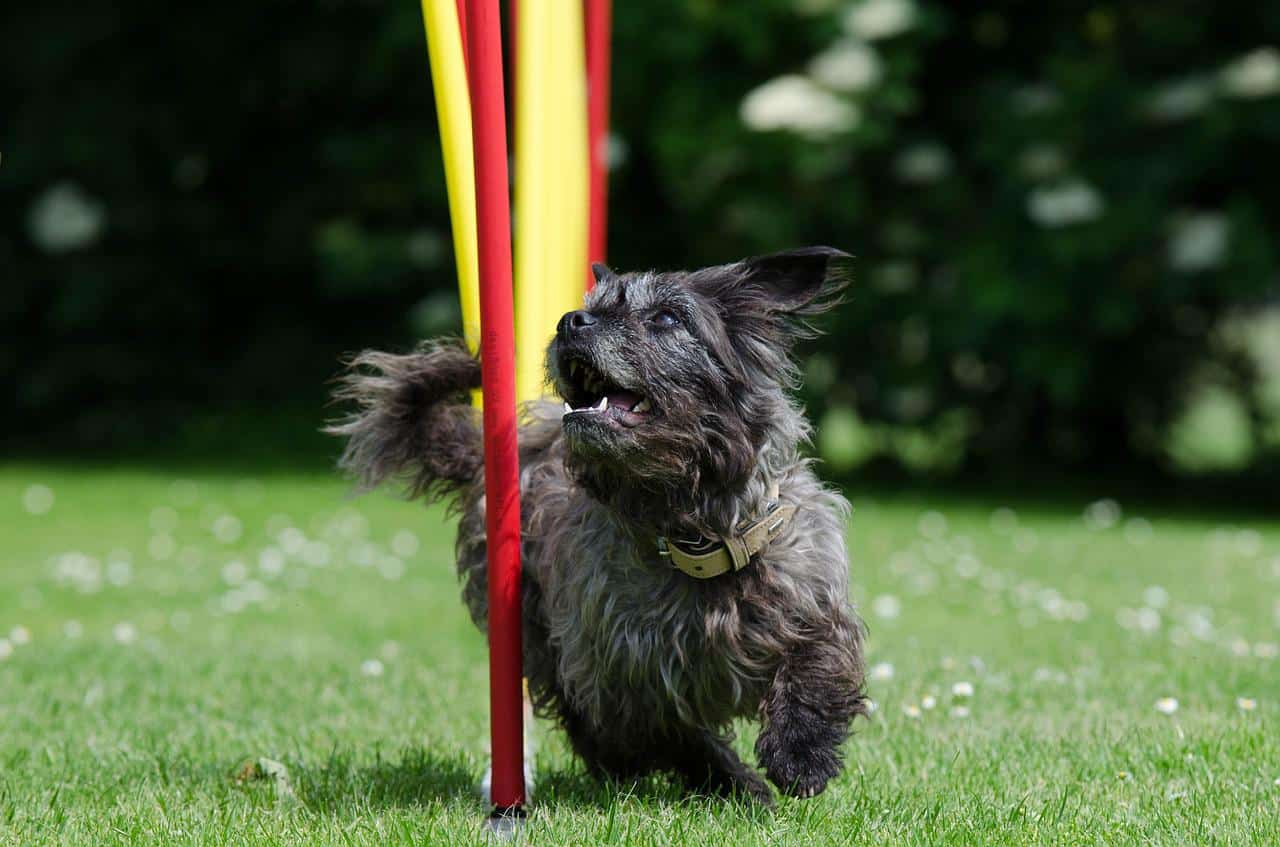
These poles are unique. It is requiring the dogs to move not just forward but also, side to side at the dictated peace. Throughout the obstacle, the participant must complete 6 to 12 poles that are 40 inches in height and 2ft apart.
Weave poles are pretty useful in teaching precision, grace and concentration to dogs. This is the same reason why it is popular in various agility events.
Tire Jump
While it is called “tire jump”, it isn’t literally a tire. One thing’s for sure, this is a common agility equipment. This is a type of jump consisting of a frame with a tire or hoop that is suspended midair. The dog has to jump through without its body touching the object.
Open Tunnel

To humans, an open tunnel looks logical and straightforward. But to a dog’s perspective, it’s the complete opposite. Dogs, as much as possible, want to be with their humans all the time. They feel anxious going into a strange environment. These two are the perfect formula for open tunnel courses. That’s why several dogs fail to complete this course.
Fortunately, there’s hope for tunnel training. It might be slow from the start but little by little, there’s going to be progress.
- Start with the training by moving to the tunnel slowly. This will give your dog an idea of where the opening and exit is.
- Don’t stretch the entirety of the tunnel’s length if this is your first-time introducing it.
- Keep the distance to a minimum.
- Gradually push the distance as your dog becomes comfortable passing through the tunnel.
- Make sure to reward your dog every time they complete the tunnel.
Seesaw
Teeter is built using 10ft to 12ft planks. It pivots on a fulcrum, hence called a seesaw sometimes. The construction is a bit off-balance. This ensures that the other end will always get back to ground.

Seesaws are tricky. This is why your dog has to be familiarized with this obstacle. They must be given proper training on how to navigate it without errors. By doing so, it almost instantly creates a professional appearance to you and your dog.
A-frame
2 planks are used to build the A-Frame. Each plank is measured 36 inches wide and 9 feet tall. These planks are propped at a certain angle. Thus, creating the A shape. Often, the frames are colored in yellow and blue with its contact zones at each end around 42 inches wide.
Power and speed is needed to navigate around A-frames. In an effort to reduce slipping, rubberized surfaces or slats are added.
Pause Table
Many are least excited with a pause table. Still, it can bring extraordinary challenges to the dogs. Just think of it, a dog running at lightning speed and then, commanding it to pause for a few seconds.
This is a dog skill that doesn’t just happen overnight. It requires consistency to develop. Majority of the dogs are so excited to complete the track. Pausing on the table is almost impossible. Being able to master this agility gives a boost to your dog’s focus and obedience. This is a mental and intellectual challenge your dog must overcome.
Border Collie and Agility Training
Agility courses tap into the Border Collie’s inner characteristics and personality. It’s how these breeds can showcase their fitness, courage, athleticism, and obedience. Even though it’s designed to challenge them, they’re having fun in the process.

Besides, agility training for dogs is an effective avenue for Borders to release their energy. It promotes positive behavior as the sport/activity demands finesse and training.
While Border Collies do well on agility courses, it is strongly recommended to talk to your vet first. This way, they can guide you whether your Collie can take on the obstacles or not. They can also suggest what type of diet your dog should have.
After all, Borders have a thirst for learning. They are trainable. They excel when approached with positive training methods. Though, be mindful that these dogs are not good with repetition. It is best to keep the training sessions short, reward them for positive behavior and make it fun.


